As winter sets in across West Bengal, a distinctive sweetness fills the air, heralding the arrival of nolen gur, a seasonal delicacy cherished for generations. Harvested from the sap of date and palm trees, this golden jaggery holds a unique place in Bengali culture. The process of making it is passed down through generations, and many compare it to a work of art. However, in today’s fast-paced world, this tradition is gradually fading away.
Senjuti Mahato and Abhishek Choudhury, both deeply rooted in West Bengal’s cultural fabric, share a passion for healthy eating. Senjuti, with a master’s degree in political science from JNU and seventeen years of experience in advertising, developed a deep understanding of consumer behaviour, market trends, and the power of storytelling.
Meanwhile, Abhishek, an MBA graduate from IIM Calcutta, spent several years leading a non-profit social enterprise, gaining invaluable insights into community development and sustainable practices.
“What really concerned us was the uncertainty about what we were eating. We realised that the food on our plates often lacked authenticity, and that’s when we decided to take action. Our common goal has always been to make clean eating a culture,” Senjuti tells The Better India.
Earth Story Farms: A search for ‘nolen gur’
Their shared vision led them to launch Earth Story Farms in 2020, with the goal of promoting clean and pure food sourced from the land itself. The founders were committed to preserving Bengal’s rich culinary traditions, particularly nolen gur.
“The making of nolen gur is not just about producing a sweet product, it is an art form that is connected to the rhythms of nature,” says Senjuti.
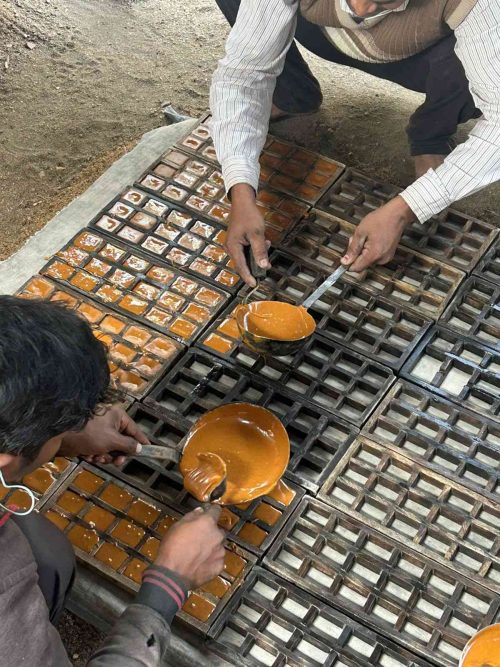
The business is grounded in their own farm in Bankura, a region blessed with ideal conditions for growing date and palm trees. “This land, with its rich red and gravel soil, plays an important role in supporting the growth of these trees, which are at the heart of the nolen gur production process,” explains Abhishek.
The journey of creating nolen gur begins with the careful collection of sap. “Once the temperature starts dropping, and the humidity lowers, that’s when the sap starts flowing,” he says. The process is managed by the shiulis, skilled local farmers who carefully tap the date trees to collect the sap.
“On the first day of production, just before sunset, the shiulis make a careful incision in the tree to allow the sap to flow into earthen pots. The sap is left to collect overnight, and by the next morning, it is gently removed and brought to the cooking unit for the next stage,” he continues.
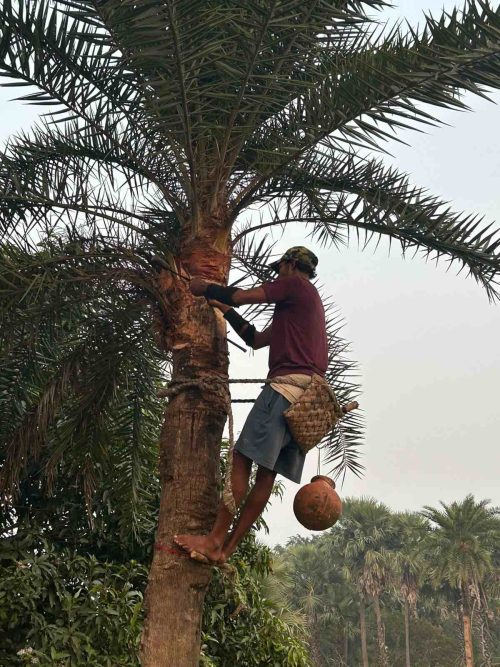
Once collected, the sap undergoes a slow cooking process over a woodfire, where it thickens into “jhola” (liquid jaggery) or “patali” (solid jaggery). “The process of making patali gur, which involves further cooking until it becomes solid, is a delicate balance of time, heat, and craftsmanship,” explains Abhishek. This traditional approach results in a product that retains its rich flavour and natural sweetness, unlike mass-produced alternatives that often contain preservatives or artificial colourings.
“We don’t use plastic pots on the farm, because we want to keep the tradition intact and want people to experience the richness and authenticity in its purest form,” adds Abhishek.
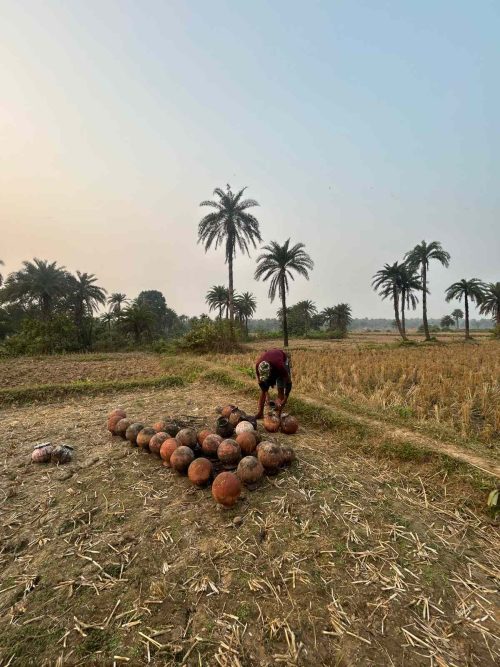
“The quality of the sap relies heavily on the weather. Cold temperatures, clear skies, and the right climate conditions are essential for the sap to flow properly. Without these, both the taste and colour of the sap and ultimately the gur will be compromised,” he elaborates.
However, with the changing climate and unpredictable weather patterns, the future of this delicate process is at risk.
Expanding opportunities for artisans
The production of nolen gur is typically a seasonal activity, tied to the colder months when the sap flows most freely. “Our goal is to create jobs throughout the year, not just during the peak season of nolen gur,” Senjuti shares. “We’ve ensured year-round livelihoods for these artisans, supporting them through the production of liquid, solid, and powdered jaggery.”
By expanding their product range, Earth Story Farms has created year-round livelihood opportunities for over 80 artisans involved in jaggery production. These workers, including approximately 50 shiulis who collect the sap and the 35 artisans who are involved in cooking and shaping the jaggery, now have consistent work, beyond the traditional two-month window.
Mintu (45), a farmer and gur artisan, shares, “As gur artisans, our biggest concern has always been securing a steady livelihood throughout the year. However, working with Earth Story Farms for the past four years has alleviated that worry. We now have the opportunity to work with them year-round, crafting various jaggery products suited to each season. This partnership allows us to focus entirely on producing high-quality products without looking into marketing and sales.”
Prakash, a 27-year-old farmer who has been connected with the venture for three years reflects, “Earth Story Farms has given us the opportunity to work in our own village, without the need to migrate to distant cities. This partnership has allowed us to remain connected to farming while ensuring a stable livelihood, allowing us to take care of our loved ones.”
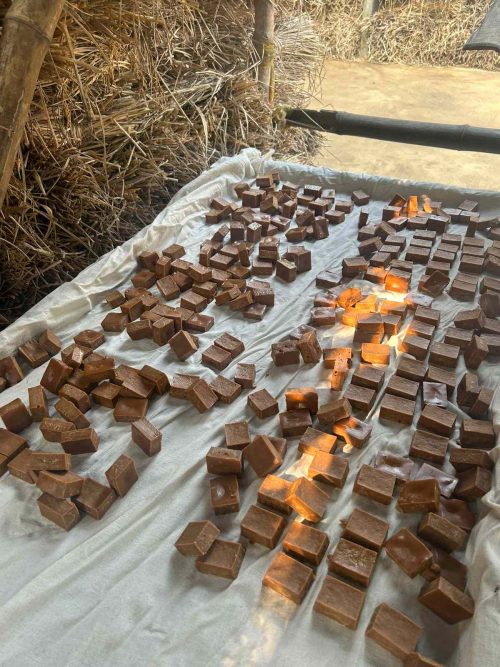
At its core, the startup is about reconnecting with tradition, supporting local communities, and preserving the authenticity of a product that has long been a symbol of Bengal’s rich cultural heritage. Senjuti and Abhishek are ensuring that nolen gur continues to be a staple in homes.
While nole gur remains a star product, it is not the only product they offer. Customers can also explore a variety of traditional items, including honey, pickles, ghee, and their best-seller, the spiced gur haldi latte, a modern health drink that combines the goodness of turmeric and nolen gur, has gained widespread popularity.
“The feedback we receive has been overwhelmingly positive, with many customers sharing stories of rediscovery and nostalgia,” shares Abhishek.
Syeda Sufia Hasan, a recent customer, recalls her experience of purchasing patali gur for her father, “As soon as he tasted it, my father was instantly transported back to his childhood. I found the flavour to be incredibly rich and authentic. The jaggery is pure, unaltered, and free from the modern additives that often compromise the natural sweetness.”
Balancing tradition and modernity
While Earth Story Farms is committed to maintaining traditional methods in the production of nolen gur, they are not opposed to innovation. Senjuti explains, “We have accepted modernity, but we balance it with tradition. The process of making the gur remains traditional, but we have modernised the presentation to make it more convenient for today’s consumers. For example, we turn the patali gur into cubes instead of the large, circular structures. This helps people use it more easily in their kitchens.”
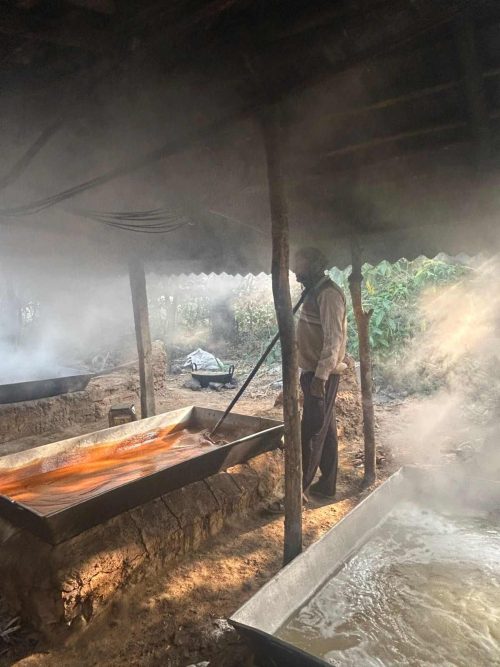
When asked about the future of traditional methods of eating, Senjuti says, “People are increasingly turning back to traditional ways as they recognise the importance of healthy eating. While the change is gradual, we are confident that more people will embrace it in the near future.”
Abhishek emphasises that Earth Story Farms is committed to preserving more than just nolen gur. “We also offer Sunderban’s authentic honey, which has been doing really well. Our kasundi, a popular Bengali mustard sauce, and cow ghee are also extremely popular among customers.”
“We want to ensure that future generations not only enjoy these pure and traditional ingredients but also understand their cultural significance and health benefits. It’s about reconnecting people with the roots of their culinary heritage and the natural goodness that these ingredients bring,” he adds.
Edited by Arunava Banerjee; All pictures courtesy Earth Story Farms
No comments:
Post a Comment